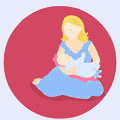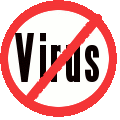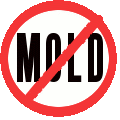Why would anyone create a website devoted to just a «cleaner»?
We believe you need to understand the product to recognize how unique MonoClean truly is.
As a coatings company we became involved in the protection of wood and paper from the effects of mold growth. In some cases you need to remove existing fungal growth before proceeding with the application. There also may be other times when you can't paint immediately so you need to protect the surface temporarily. There are also some things you just can't "paint" yet you still need to protect them from microbiological growth.
We thus decided to develop a cleaner that met certain criteria:
- Effectively and safely clean a multitude of surfaces.
- Exhibit a broad range of anti-microbial capabilities.
- Contained only GRAS compounds.
- Left an invisible film that would continue to inhibit organisms.
- Be easy and pleasant to use.
The key to success was finding lauric acid and lauracidin. Lauric acid is a fat found
in coconut milk and human breast milk. When ingested the body converts it into lauracidin (monolaurin). It's the stuff that protects breast-fed babies from becoming ill.
Studies since the 1960's have found that monolaurin has a significant ability to inhibit the growth of lipid
shelled organisms. These include many disease causing bacteria and viruses.
Lauric acid is a fat found
in coconut milk and human breast milk. When ingested the body converts it into lauracidin (monolaurin). It's the stuff that protects breast-fed babies from becoming ill.
Studies since the 1960's have found that monolaurin has a significant ability to inhibit the growth of lipid
shelled organisms. These include many disease causing bacteria and viruses.
The first step was to convert the monolaurin into a soap. The second step was to develop a method of leaving an invisible thin film of monolaurin on the surface. MonoClean does these things.
What does this mean to you? It means you can buy a cleaner that is 100% safe around children, pets and chemically sensitized individuals. It means that any surface cleaned with MonoClean remains antimicrobial without using dangerous chemicals.


